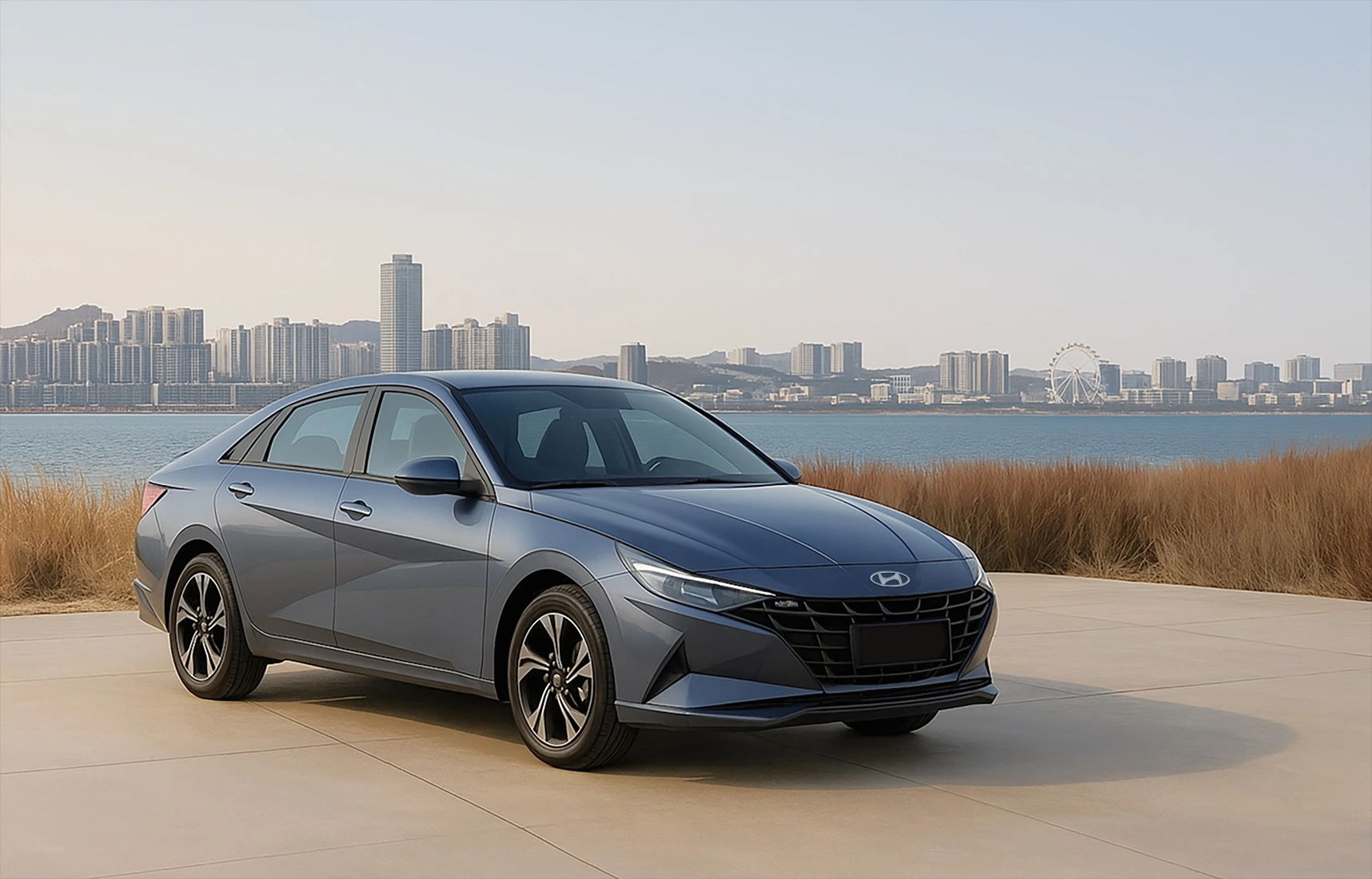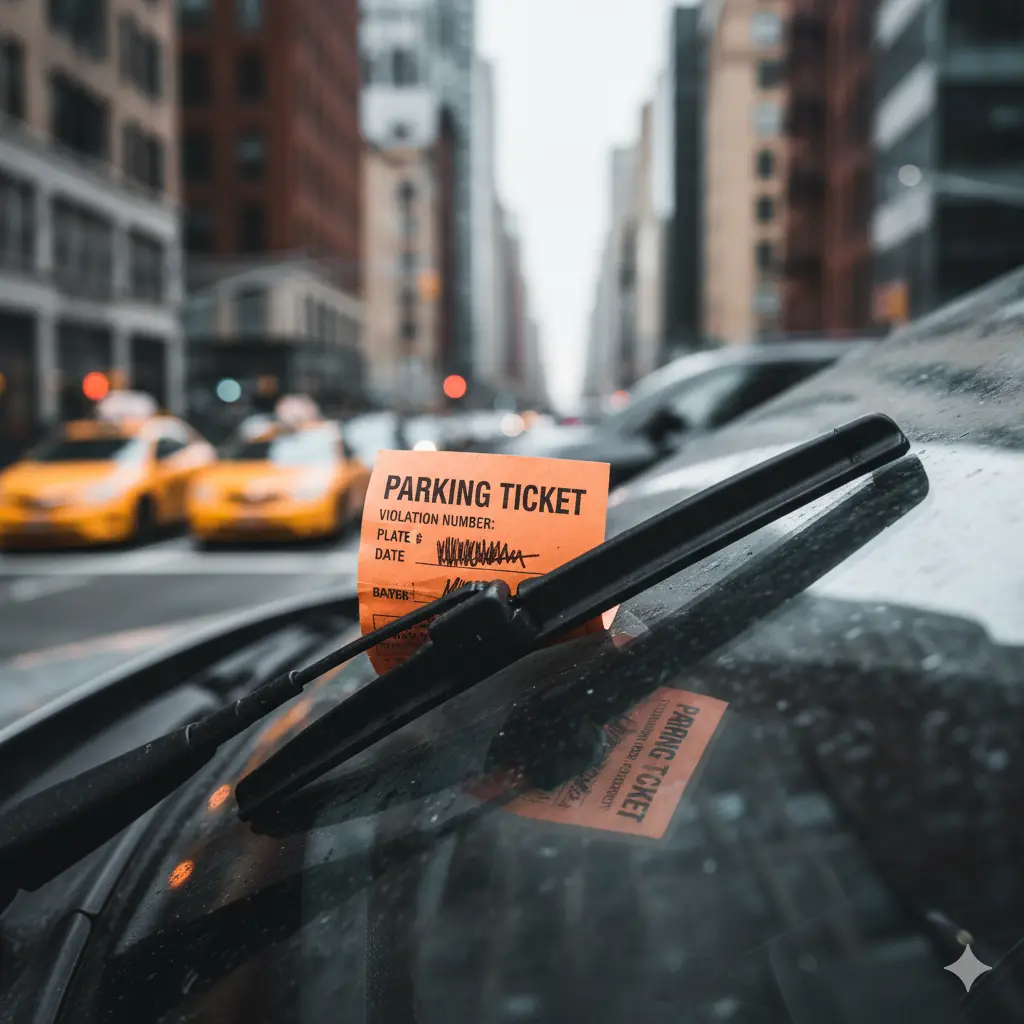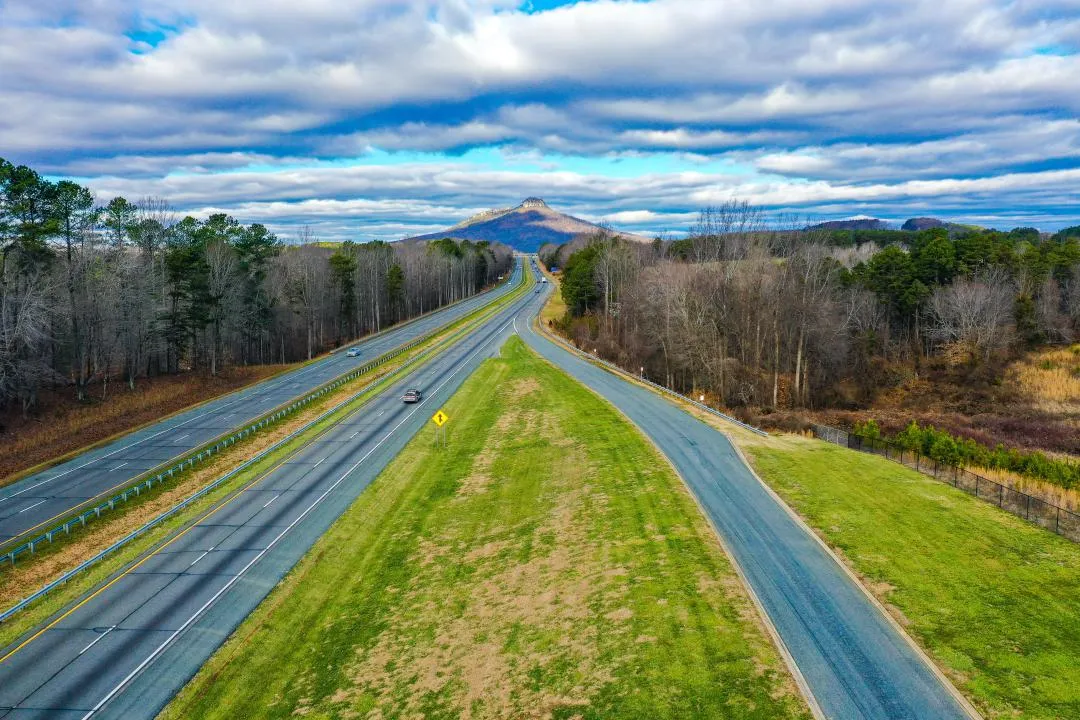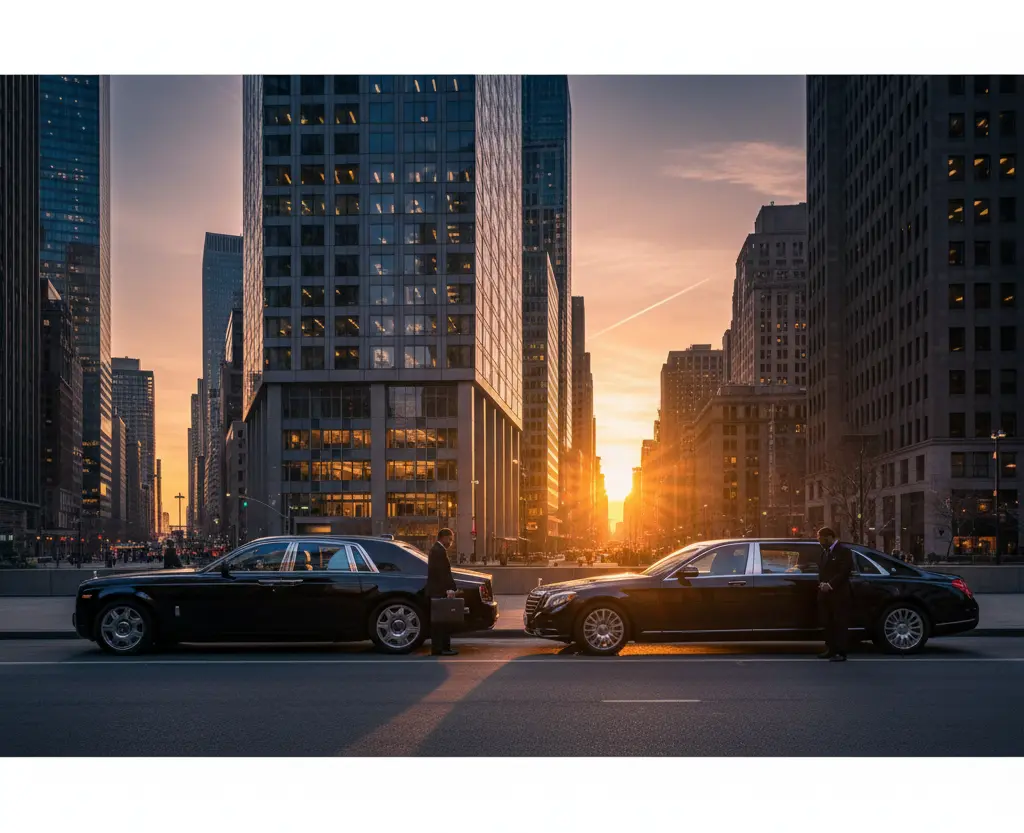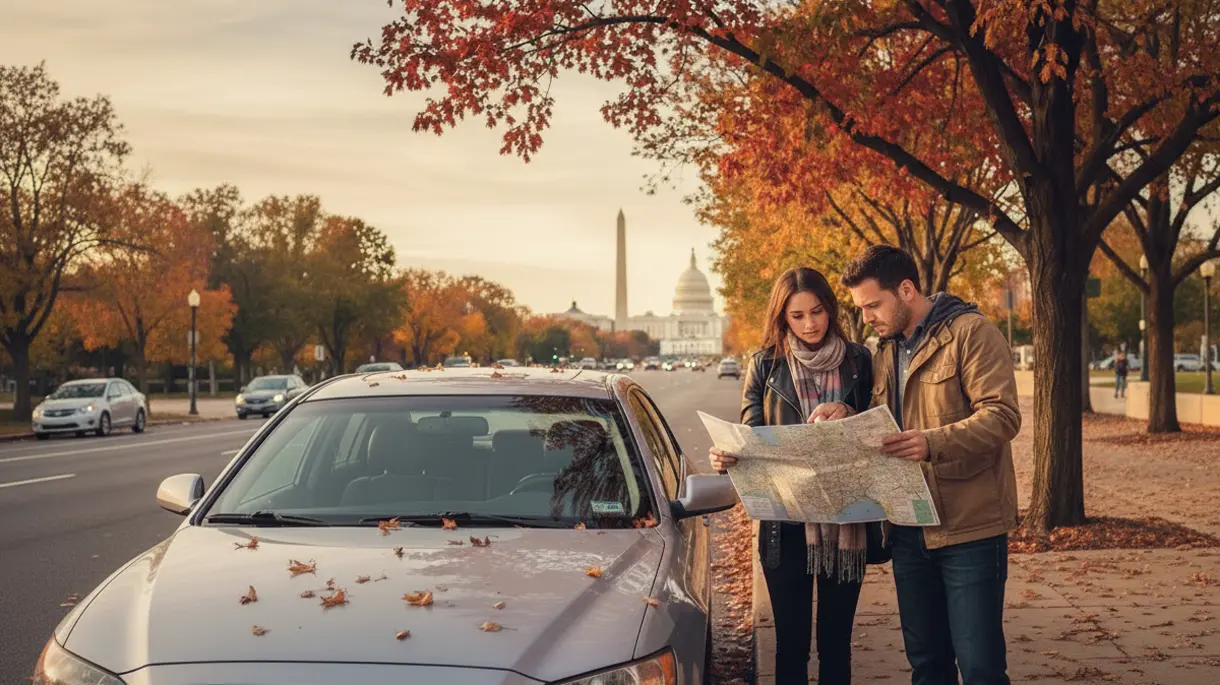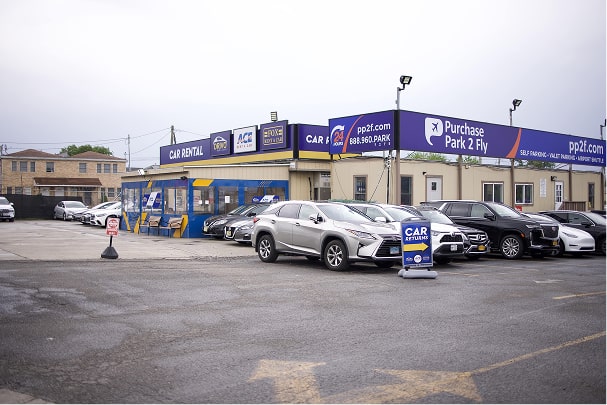Parking and Driving Rules in NYC: Your Ultimate 2025 Guide
Driving and parking in New York City has always been a challenge, but 2025 brings new rules, regulations, and opportunities for drivers. From the Central Business District Tolling Program (Congestion Pricing) to lower speed limits under Sammy's Law, navigating the city's streets requires more than just a basic understanding of the law. This guide offers everything you need to confidently drive, park, and avoid costly tickets in NYC.
If you'd rather avoid the stress of daily parking and the complexities of owning a car, there's a smarter way: rent a vehicle only when you need one. With Drivo, enjoy the freedom to take day trips, weekend getaways, or quick errands without the constant worry of finding parking.
Driving in 2025: Congestion Pricing & New Speed Limits
As of January 2025, New York City implemented the Central Business District Tolling Program, also known as Congestion Pricing. This revolutionary program charges vehicles that enter Manhattan below 60th Street. The toll rates vary depending on the time of day, with peak hours (5 a.m. - 9 p.m.) costing up to $9 for passenger vehicles using E-ZPass.
This change is significant: it directly affects how drivers plan their trips into Manhattan. However, Drivo can help you navigate this new reality. Rent a car from our convenient locations outside the Congestion Zone and explore the boroughs or escape the city without worrying about the tolls.
Another major update for 2025 is Sammy’s Law, which allows the NYC Department of Transportation (DOT) to reduce speed limits in specific areas to as low as 10 mph. This law prioritizes safety, particularly around schools and neighborhoods with a high rate of traffic injuries. While the default speed limit is still 25 mph, expect frequent changes in speed zones from one block to the next. Always observe posted speed limit signs, as they take precedence over GPS or phone apps that may display outdated information.
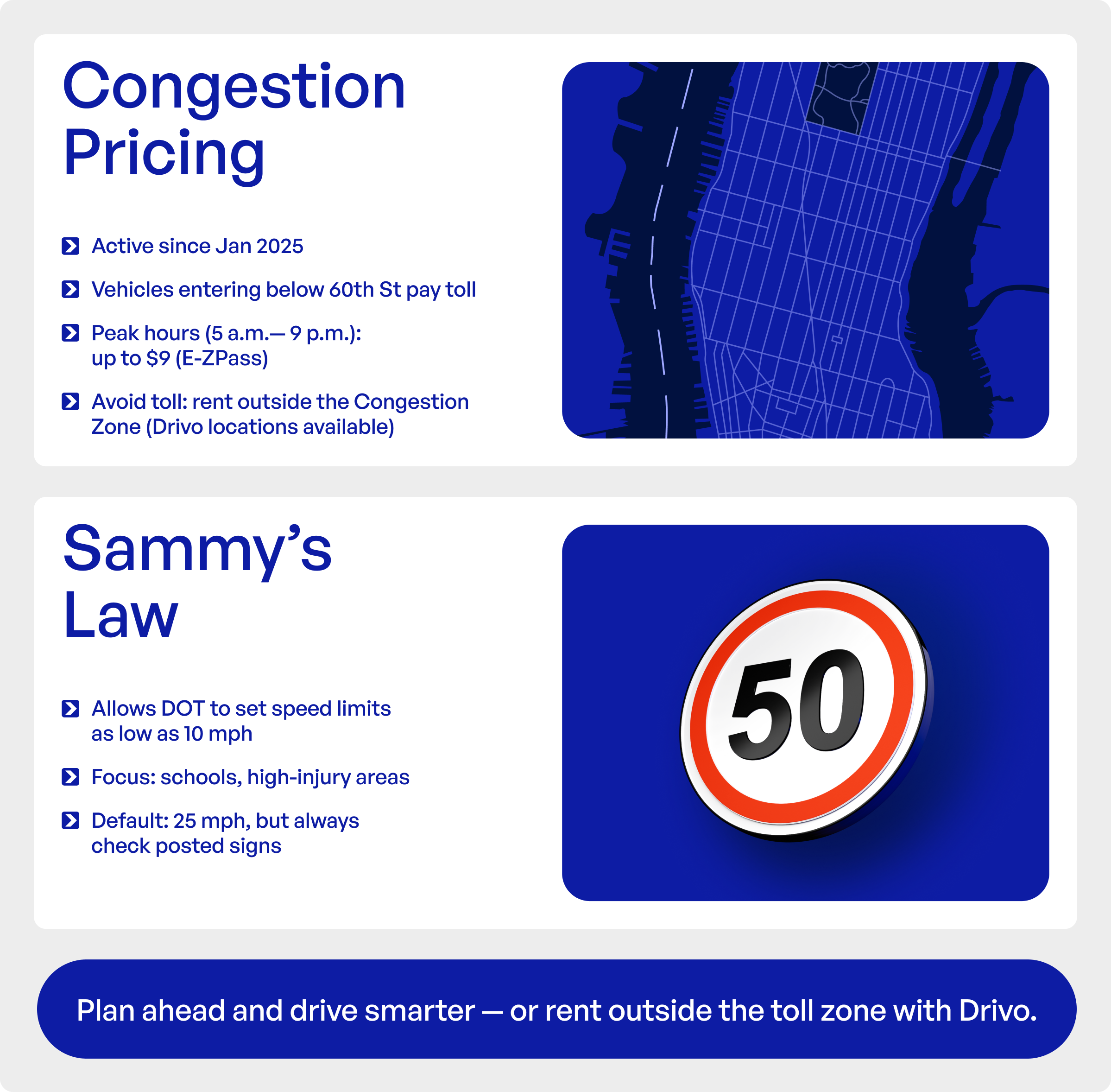
NYC Driving 101: The Official Rules of the Road
Master these basics, and you'll be prepared to navigate the streets confidently:
Speed Limits: It’s Slower Than You Think
New York City's default speed limit is 25 mph, unless posted otherwise. This is designed for safety in an environment with heavy foot traffic, cyclists, and vehicles. Schools and residential areas often have lower speed limits. Be cautious: Sammy's Law allows the DOT to implement 20 mph and 10 mph speed zones in specific areas.
What this means in practice:
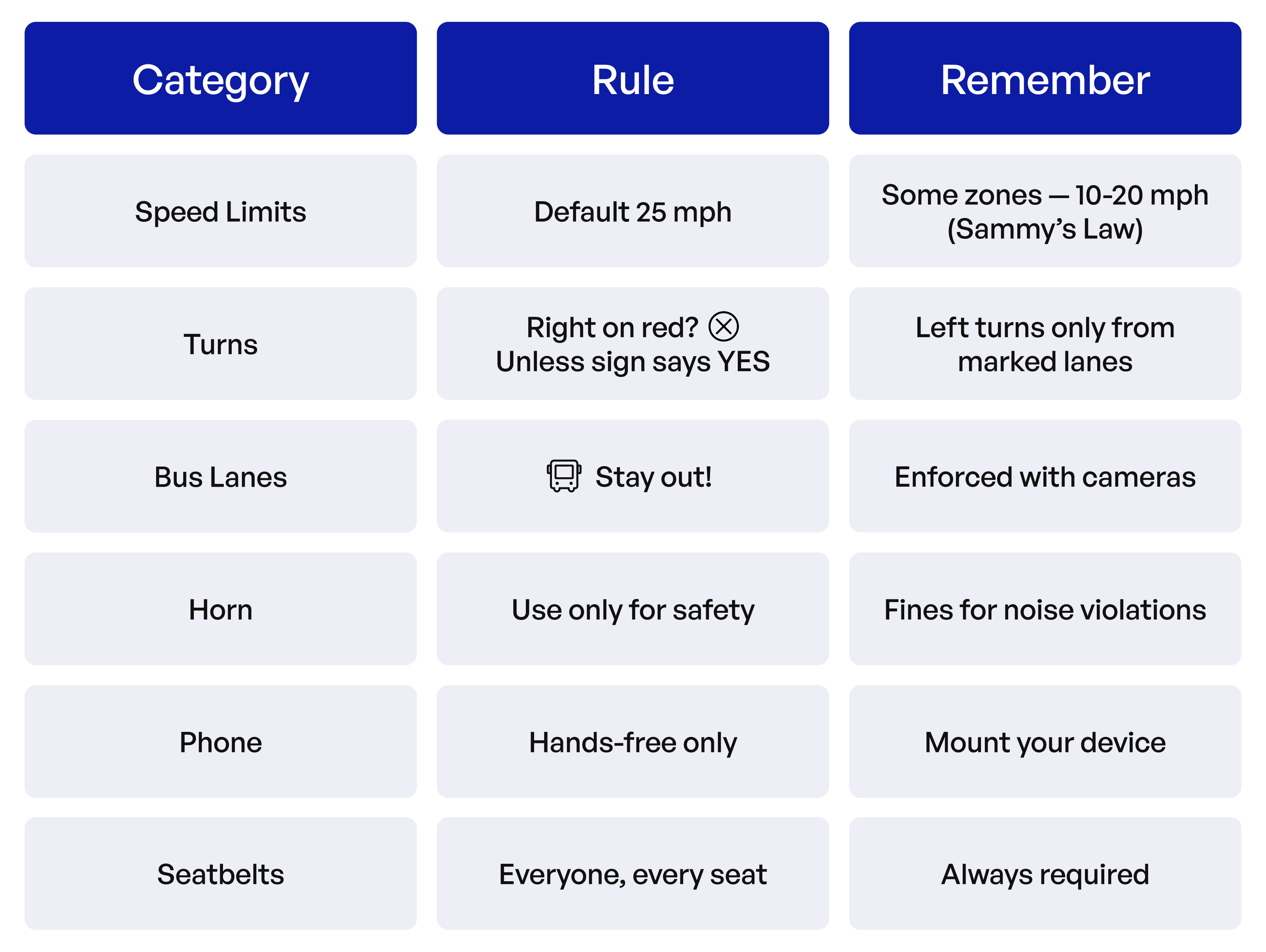
Unwritten Rules: How to Actually Drive in NYC
There are official rules, and then there's the NYC driving culture. NYC driving is assertive but predictable when you read the cues and respect the flow.
Merging and Changing Lanes
Think zipper merge – when lanes narrow, cars alternate, one from the left and one from the right. Don't merge too early or late. Signal early, maintain your lane, and merge smoothly.
Pro tips:
- Signal early and hold your line. Don’t make flinchy lane changes.
- Avoid last-minute merges – drivers expect you to merge at the cones or arrows.
- Keep scanning for parked vehicles and cyclists.
Watch Out for Pedestrians, Cyclists, and Taxis
- Pedestrians: NYC crosswalks are occupied by pedestrians who often step out unexpectedly. Always yield to them, even if you have a green light.
- Cyclists: check your mirrors before opening doors or turning across bike lanes.
- Taxis/Ride-hails: be aware of sudden curb stops, especially for passenger pickups or drop-offs.
Navigating Borough-Specific Challenges (Manhattan vs. Brooklyn)
- Manhattanone-way avenues, dense traffic, and frequent bus lanes make lane discipline vital. Don’t enter an intersection you can’t clear – gridlock fines are serious.
- Brooklyn & Queens: calmer speeds, but residential streets can suddenly narrow. Pay attention to posted signs.
- The Bronx & Staten Island: expect more expressways (BQE, Major Deegan), toll bridges, and higher-speed merges.
The Ultimate Guide to NYC Parking Signs
NYC parking signs can be overwhelming, but they follow a consistent system. Read from top-to-bottom, left-to-right, and you'll decode most restrictions with ease.
Colors and Symbols Explained

Reading the “Parking Tower”
When you see stacked signs, apply the most restrictive rule first. Here's how it works:
- No Standing 7–10 AM → You can't stop for any reason during these hours.
- Street Cleaning (ASP) Tue/Fri 9:30–11 AM → Even if it's outside the "No Standing" hours, you must move your vehicle.
- 2-Hour Metered Parking → Outside restricted hours, you can park for 2 hours with payment.
Alternate Side Parking (ASP)
ASP is the city's street-cleaning system. On posted days, one side of the street must be cleared for sanitation vehicles. Be aware of suspensions for holidays or bad weather.
How to Check ASP Status:
- Check @NYCASP on Twitter/X.
- Use the 311 NYC app for updates.
Double Parking During ASP:
Warning: Double parking is illegal at all times. Though some drivers temporarily double-park to facilitate cleaning, this is not an authorized practice and can result in fines.
Paying for Parking: Meters, Garages, and Apps
- Muni meters: Use the ParkNYC app or coins/cards to pay. Meters are usually limited to 1-2 hours.
- Parking Garages: Book in advance using apps like SpotHero and ParkWhiz for guaranteed spots at discounted rates.
E-ZPass and Congestion Pricing
With the new Congestion Pricing tolls, using E-ZPass is essential for saving on tolls in Manhattan’s core. Rent a Drivo and use locations outside the Congestion Zone for regional travel.
Common NYC Parking Violations
These are the top reasons for NYC parking tickets – avoid them to save money.



What to Do If You Get a Ticket:
- Pay online via NYC’s portal.
- Dispute tickets with proof of incorrect info, payment, or unclear signs.
Conclusion
Navigating NYC's driving and parking landscape might seem overwhelming, but with the right knowledge, it’s manageable. Keep these key points in mind:
And for those who want the benefits of a car without the hassle of daily parking: Drivo is your ultimate solution.
Ready to explore NYC without the parking stress? Rent a car from Drivo today and enjoy flexible, hassle-free driving. No daily parking battles, no fines – just freedom on the road.
tips, straight to your inbox
